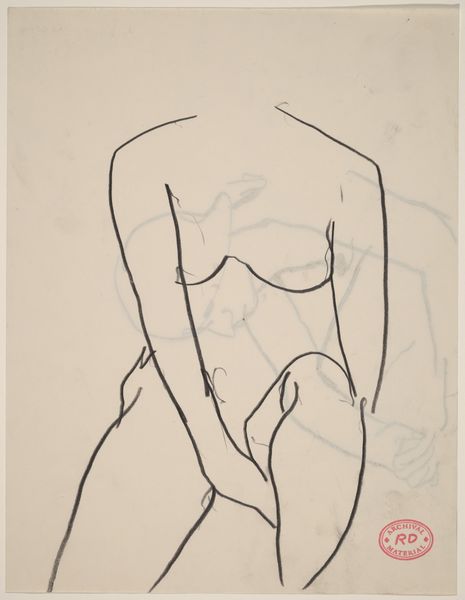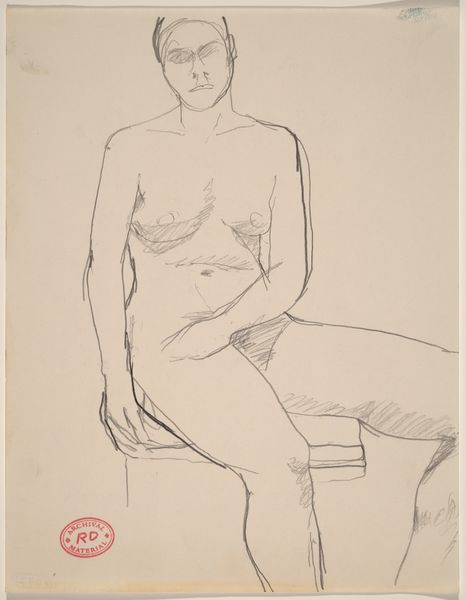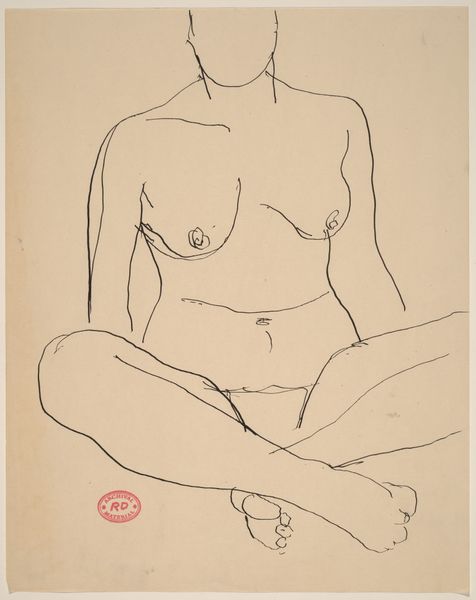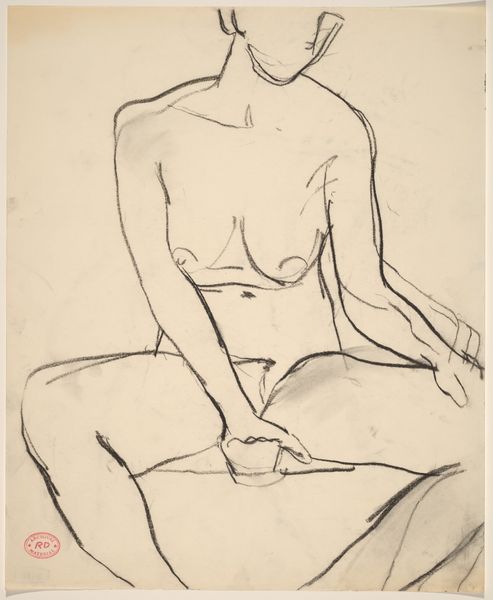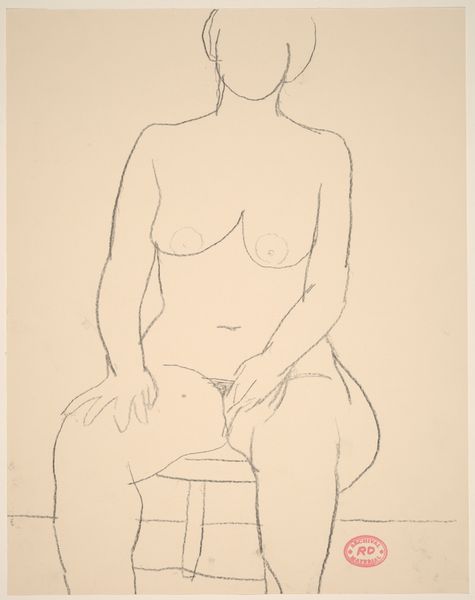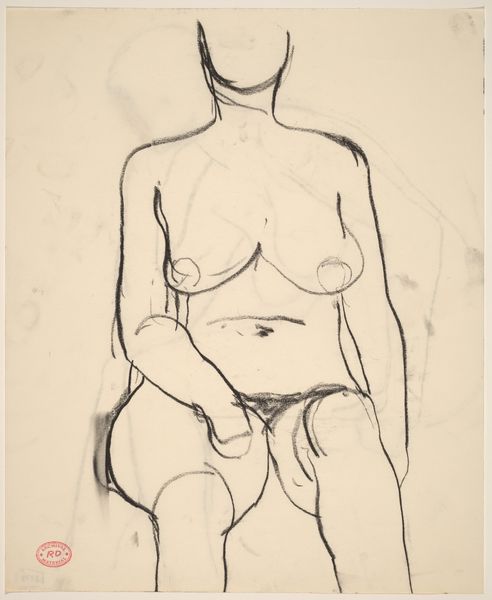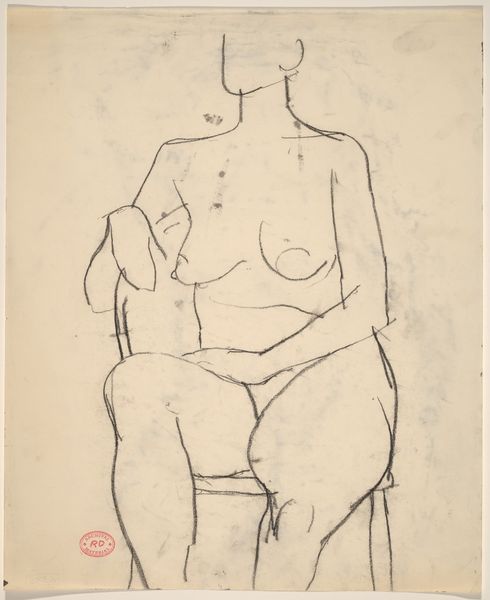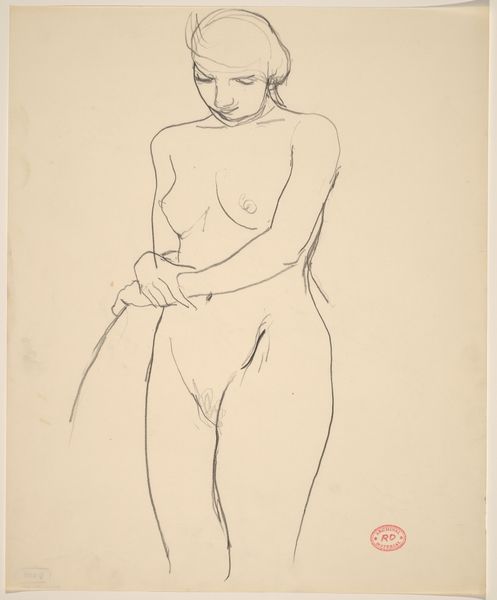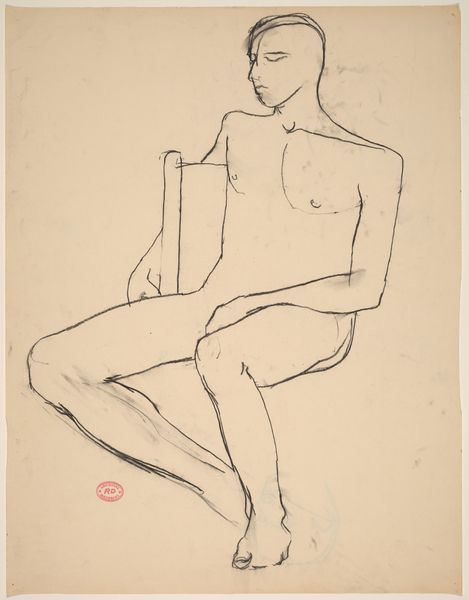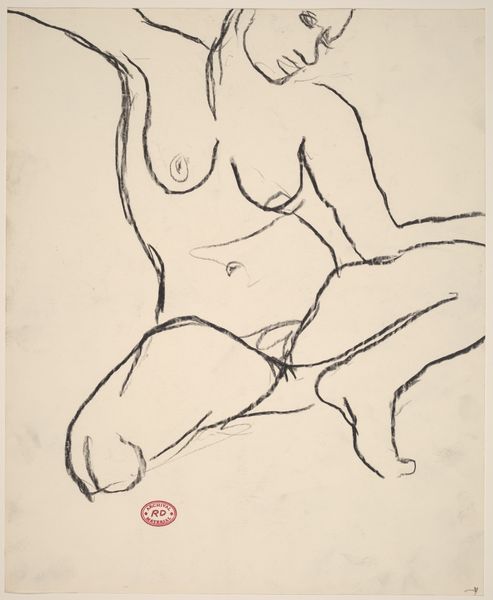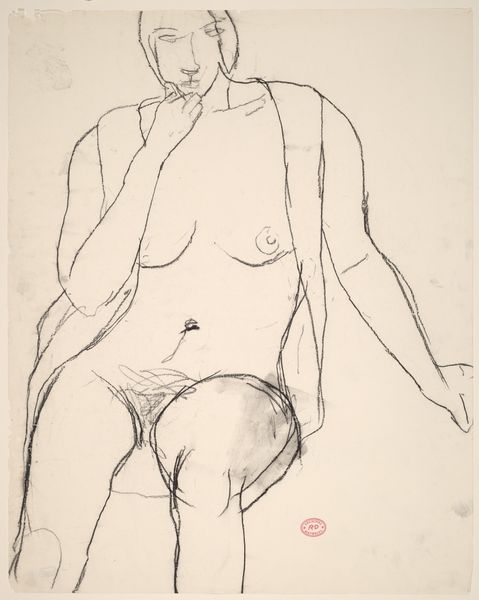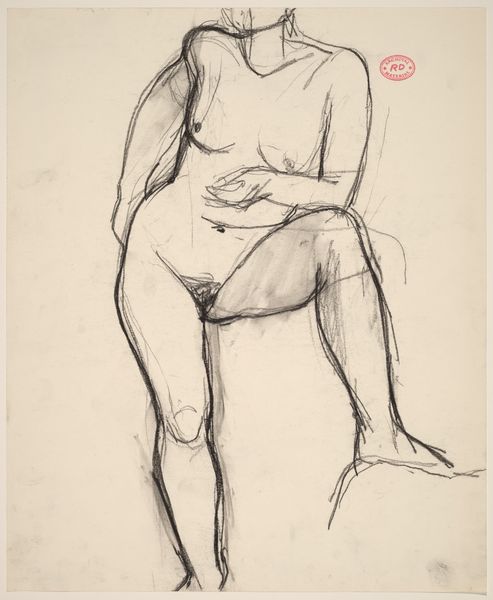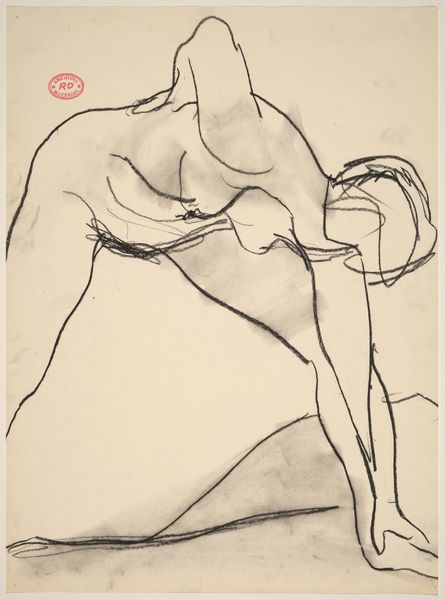![Untitled [kneeling female nude holding cup] by Richard Diebenkorn](/_next/image?url=https%3A%2F%2Fd2w8kbdekdi1gv.cloudfront.net%2FeyJidWNrZXQiOiAiYXJ0ZXJhLWltYWdlcy1idWNrZXQiLCAia2V5IjogImFydHdvcmtzL2QwZGU1MDY1LWYxOWMtNDdmMi04NjU1LWZmNDIyNjVmMzQ5OC9kMGRlNTA2NS1mMTljLTQ3ZjItODY1NS1mZjQyMjY1ZjM0OThfZnVsbC5qcGciLCAiZWRpdHMiOiB7InJlc2l6ZSI6IHsid2lkdGgiOiAxOTIwLCAiaGVpZ2h0IjogMTkyMCwgImZpdCI6ICJpbnNpZGUifX19&w=3840&q=75)
drawing
#
drawing
#
amateur sketch
#
toned paper
#
light pencil work
#
pencil sketch
#
incomplete sketchy
#
bay-area-figurative-movement
#
pencil drawing
#
ink drawing experimentation
#
arch
#
portrait drawing
#
pencil work
#
watercolour illustration
Dimensions: overall: 45.7 x 35.6 cm (18 x 14 in.)
Copyright: National Gallery of Art: CC0 1.0
Curator: Diebenkorn's "Untitled [kneeling female nude holding cup]", created between 1955 and 1967, is a fascinating study in form using pencil on paper. What's your immediate reaction to this drawing? Editor: There's a simplicity that borders on the stark, but the linework creates an undeniable feeling of intimacy. The incomplete sketchy strokes have a quality that I would describe as both reserved and immediate. Curator: Indeed. Considering Diebenkorn's broader practice, specifically the Ocean Park series that runs parallel to his figural works, we can read the kneeling female nude not just as an exercise in traditional figure drawing but also as an intimate representation of domesticity from the gaze of the post-war era. Editor: I'm drawn to the strategic placement of the lines; their absence defines as much as their presence. Look at how a single contour defines the shoulder, contrasting with the more heavily articulated rendition of the torso. There’s almost a mathematical precision at play, organizing mass and plane in a balanced tension, even though the features remain unfinished. Curator: Right, and what's equally important to mention, too, is the almost-faceless rendition. If the identity is masked in plain sight, what sociopolitical norms of representing womanhood are at work? What ideals and/or archetypes do they tap into, and who is the woman portrayed for, if not herself? Editor: Precisely, one wonders what narrative context this nude subject is caught within or how that cup alters its semantic framework. Without the visual information required to "define" her within a social script, her portrayal exists only within a dialogue between material and the artist. Curator: Absolutely, these choices contribute to its broader conceptual strength. And through this rendering, viewers are left with only raw human experience; exposed, vulnerable, and honest. Editor: Looking at the image as a totality of all its conscious absences, you do feel as though what lingers between the drawn marks of the artist is not a study of subject so much as it is the spatial study of a space between figures that the paper seeks to record through indexical traces, even if those traces leave more out than they fill in. Curator: Ultimately, the drawing stands as a quiet commentary on identity, inviting the audience to complete the narrative themselves, if they are ready. Editor: For me, the charm is in those unfilled marks—as if its ultimate state as work "in progress" embodies its meaning best of all, despite its age.
Comments
No comments
Be the first to comment and join the conversation on the ultimate creative platform.
